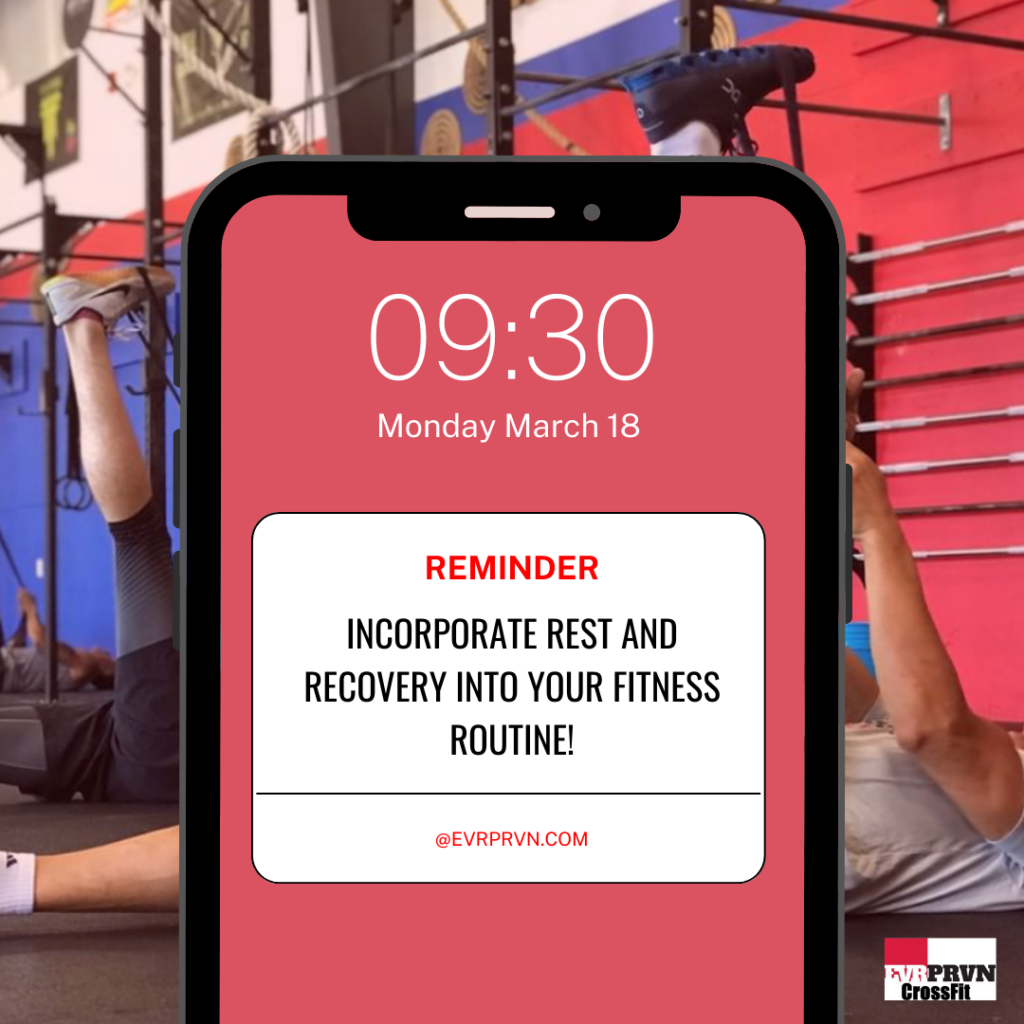In the pursuit of your CrossFit goals, it can be easy to get caught up in the adrenaline and intensity of your workouts. Especially when you start to see the results of your hard work, people can get caught up in pushing themselves too hard in the gym, or working out too many times throughout the week. However, it is important not to overlook the importance of rest and recovery. Your body needs proper time to recover and repair the muscles you just killed during your workout.
The reason rest days are vital is because of the hormone your body releases into the bloodstream everytime you workout. Cortisol, also known as your stress hormone, helps facilitate activity indirectly, but can still have a lasting effect on your body. When we workout, our body can tell that we are doing something strenuous. Because cortisol is our fight or flight hormone, when you participate in strenuous exercises, your cortisol levels increase, helping your body to push you through the workout.
While rising cortisol levels are effective when it comes to completing a workout, like any other hormone, it has its time and place in our body. If it is constantly elevated, you could potentially experience some negative side effects. For example, if your cortisol levels are elevated for an extended period of time, it has the potential to kill brain cells, cause premature aging in the brain, and weaken your immune system. So if you are working out everyday with no breaks in between for rest, you are flooding your bloodstream and brain with consistent elevated levels of cortisol, and preventing proper recovery of the body.
Making sure you are getting rest and lowering your cortisol levels can have multiple benefits for not only your physical health, but your stamina during your future workouts. Here are five reasons why you should be including rest in your routine:
- Muscle Repair and Recovery
During intense exercise, especially CrossFit, your muscles are under intense stress and damage. Rest days give your muscles time to repair and rebuild, leading to strength and endurance gains over time.
- Injury Prevention
Continous stress on muscles and joints without proper rest can increase the risk of injury. Rest days give these structures time to recover and adapt to this type of physical activity, reducing the likelihood of injury and improving your joint-health.
- Prevention of Overtraining
Overtraining occurs when the body is subjected to excess stress without proper recovery. This can lead to fatigue, decreased performance, mental distress, and increased risk for injury. Reducing overtraining helps to ensure the body has the ability to restore energy levels.
- Performance Optimization
Adequate rest allows muscles to replenish glycogen stores, reduce inflammation, and restore energy levels, leading to improved performance during workouts and competitions.
- Mental Well-being
Training at high intensities can be mentally taxing. Rest days provide an opportunity for athletes to recharge mentally and reduce stress levels to prevent burnout. This can also help keep athletes motivated, and create a more sustainable fitness routine.
Active recovery is also a great way for athletes to incorporate light physical activity while also promoting recovery. Active recovery involves low-intensity activities that promote blood flow and aid in the recovery process without placing undue stress on your body. Some examples of active recovery activities include:
- Light jogging
- Brisk walking
- Cycling
- Swimming
- Mobility exercises
Finding a balance between intense workouts and recovery is crucial for developing a sustainable workout routine. It’s important to remember that your fitness journey is a marathon, not a sprint. take the time to rest, recover, and come back stronger than ever. Take the time you need to properly rest, recover, and start your next workout stronger than ever.
Reach out to one of our coaches today to learn more about how you should be balancing your workouts with rest and recovery!

